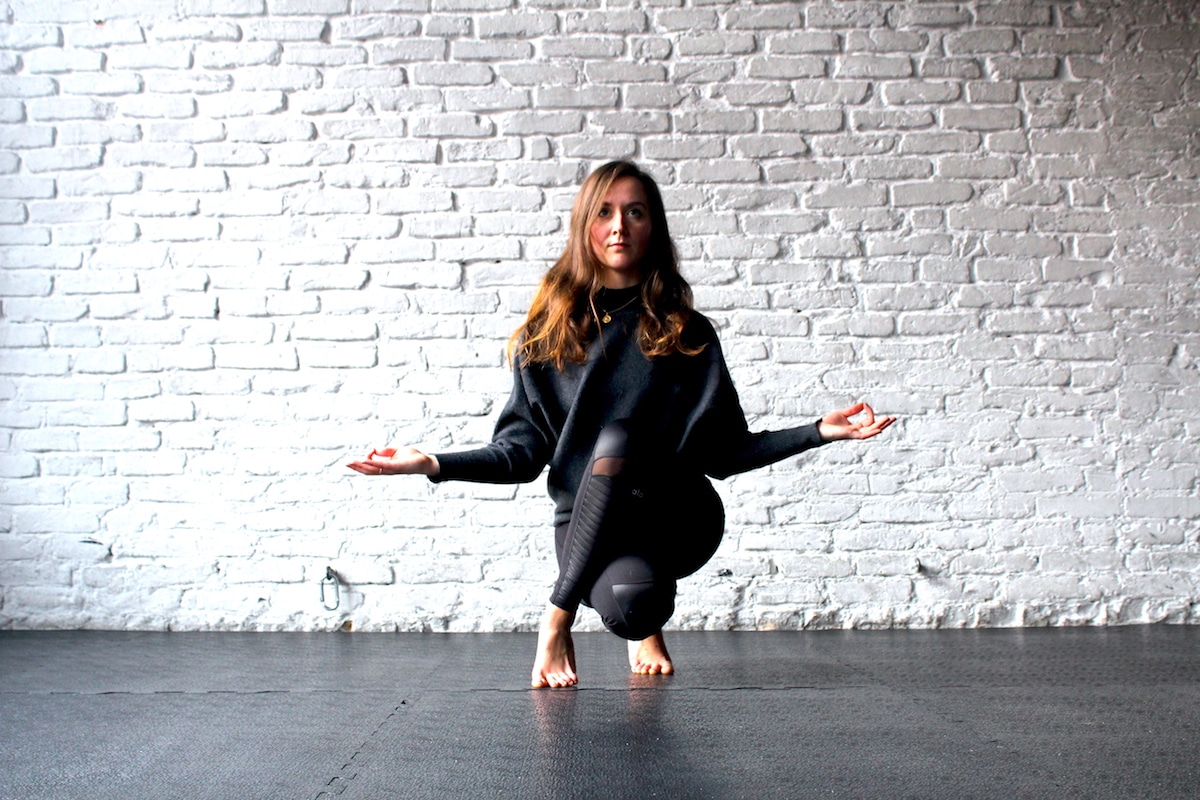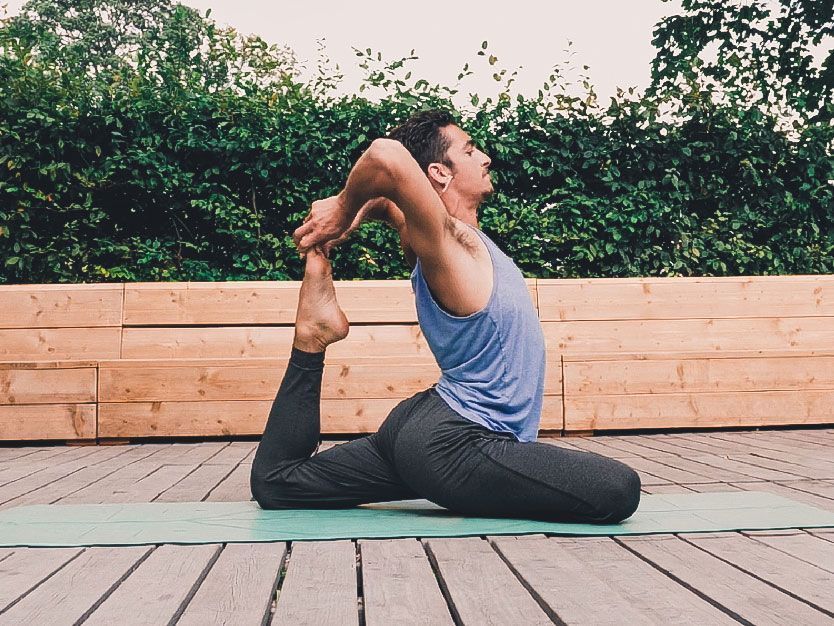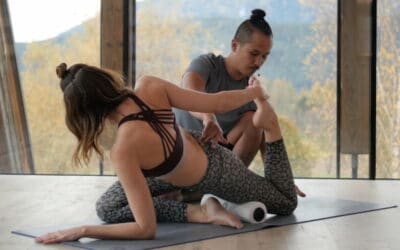When people think of yoga, the most abstruse images flash in their heads. Distortions, extreme handstands in even more extreme places or simply meditating personalities with Malas around the neck.
Often, just these pictures scare off and leave many a bland aftertaste. This is compounded by reports of injuries in yoga and horror stories, such as herniated discs or even strokes.
Basic Principles:
At this point, I would like to emphasize again how important it is to have a well-trained yoga teacher in a yoga studio or to have a professional online yoga teacher, with whom you feel cared for.
The best way to recognize this is, of course, how well you feel during and especially after the lesson, but also because of what the teacher can show for a specialist, anatomical knowledge. In every exercise, can he comprehensibly explain to you why you are doing it right now, and which muscles are being strained?
For this, he does not have to have a medical, physiotherapeutic or sports science background (of course it is useful), but simply a basic understanding of movement and the human body.

It’s important to have a well-trained yoga teacher in a yoga studio or a professional online yoga teacher. Photograph by Tatjana Pfarr.
Maybe it sounds a bit harsh, “he MUST”, but we should never forget that EVERYONE can become a yoga teacher today, and we need to be aware of the responsibility of working with human bodies – and in other occupations, that as well do, are extremely demanding and lengthy training necessary. Believing in the effect of yoga is one thing, really understanding one another.
In the following, I would like to bring you closer to how yoga can be and become functional. Compared to current yoga studios and professional online yoga it is important to note that the classic, traditional styles of yoga are not bad and wrong, but they are also just thousands of years ago when people did not have the medical knowledge that we have today.
One half of me is a very big fan of Eastern spirituality and the belief that man can heal himself. The other half loves science. This apparent dichotomy can still be wonderfully combined. We can teach yoga modern, pay attention to anatomical conditions, and yes, we can also consider yoga as sports, muscle building and coordination training and still honor the spiritual side and connect with it.
Inspired by my teacher Young-Ho Kim: We honor tradition, but we also support evolution. How is yoga becoming functional? Long story short: We need to understand and internalize the anatomy. To functionally teach yoga, we as teachers, as well as students, need to understand how our muscle chains and fascia work together.
What happens to our hamstrings when we tighten the quadriceps? Why are there so-called yogi toes? What does it mean in a handstand when we flex our feet or pointe our toes? Why is the headstand / shoulder stand / plow not necessarily the best choice for yoga classes? – I’m sorry, Ashtangi’s, Jivamukti’s, Hatha yogis and all headstand supporters – but it’s one of the worst things you can do to your neck … A functional yoga class is a self-contained and closed system.
Each exercise builds on the other and prepares for the peak pose – keyword: Sequencing. The muscles are strengthened and warmed up in order to stretch them. And in Vinyasa, the whole thing is still connected beautifully as a flow of exercises without a stop. And all of a sudden teaching yoga will be an art in itself.
“We honor tradition, but we also support evolution.”
Basic Principles
1. No Direct Transition from Forward Folds to Backbends
If we go from a backbend directly into a forward folds and in the worst case afterwards in a backbend again. This is too extreme for our spine and especially for the spinal discs. There is not enough time for them to align right and adapt to the new situation. In practice, this means: either focus on backbends or forward folds and then install the respective compensation movement at the end of the lesson.
2. Keep the Ankle Stable
Always! And even more so, when we find an external rotation in the hips. In exercises such as the pigeon, for example, the ankle should always be straight and wrinkle-free. The foot should never creep (like a crescent moon). It would be better to make the angle in the knee smaller than compulsively placing the lower leg forward in parallel and bending the ankle off or avoiding it to the side. Safety first!

Matt Girodano performing King Pigeon. Photograph by TINT.
3. Keep Your Knees Bent
Especially for forward folds, whether standing or sitting, but also in downward facing dog. Only a few students and teachers have the flexibility to manage folding forward or doing a down dog with the legs straight while maintaining a straight back.
To protect your intervertebral discs, the outer shape basically shouldn’t be of importance. As well as alignments like “Straighten your legs.” Roll up your mat and flee immediately (or just leave your legs bent). The hamstrings are even better stretched if you bend your legs, but straighten your back. The best way to do that is by bringing your lower back in a hollow position.
4. Stop Twisting Your Head
Okay, if there’s a very cute yogi or pretty yogini in the row behind you then you can turn your head. But only then. Otherwise, the following applies: Look where it feels most comfortable for your neck. And seriously, does it feel really nice to stare at the ceiling in a corner or triangle? Not for me. And purely anatomically, it would also look funny on x-ray.
As a rough guide here: Let the neck wrinkle-free so that you could always move your head freely. For most earthlings, this means keeping your head neutral and your chin in line with your sternum. So, keep your head high & your heart strong!
Saying this I apologize for wrecking some yogic beliefs (#sorrynotsorry). It’s true, in yoga there is basically no “wrong” or “right”. Buuut there are also people who have recognized that there is “healthy” and “unhealthy”. And also people, who translate this into yoga and apply it.
And believe me, once you’ve attended such a yoga class and all of a sudden everything makes sense, your body is put together as a whole and you notice how good you feel. Then you’ll never want to do anything else again (thanks on my wonderful, great teachers and lecturers!).
And now I wish you a happy, healthy and ego-distant yoga practice. With either yourself, your favorite yoga teacher or with your professional online yoga platform.





